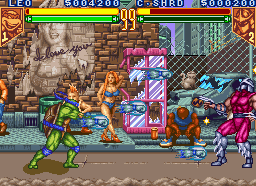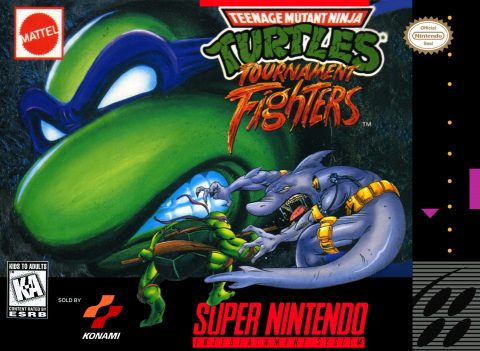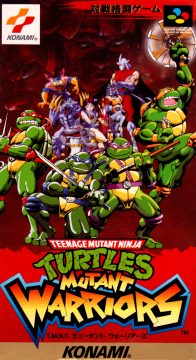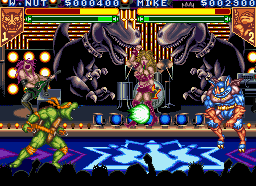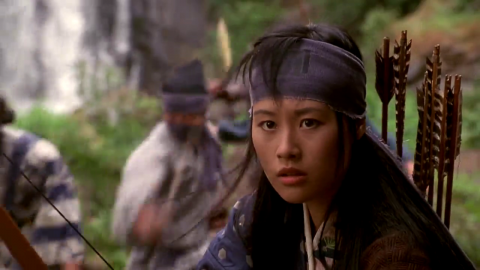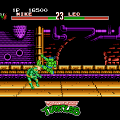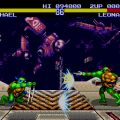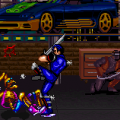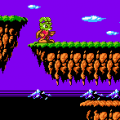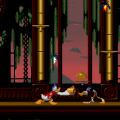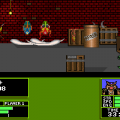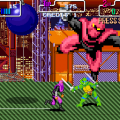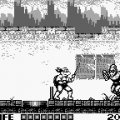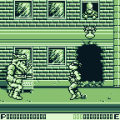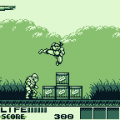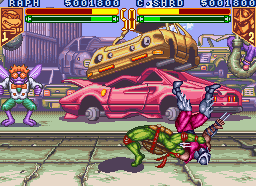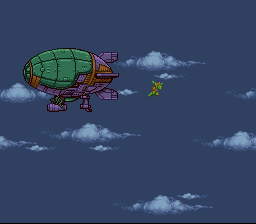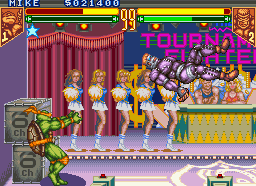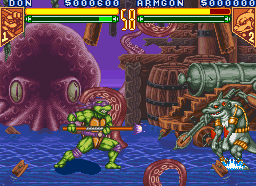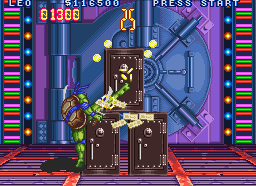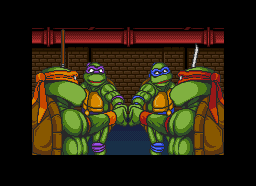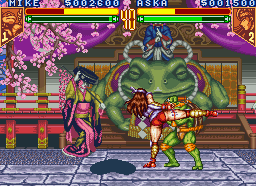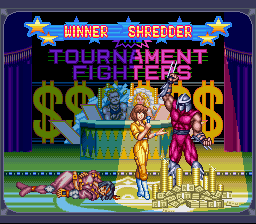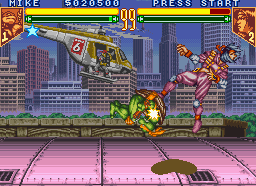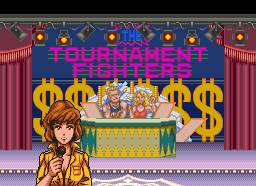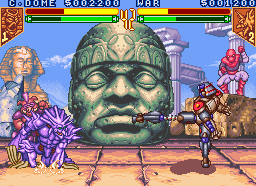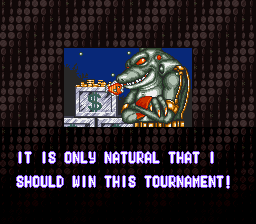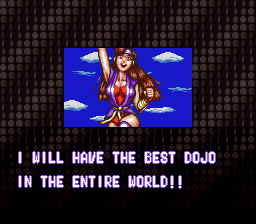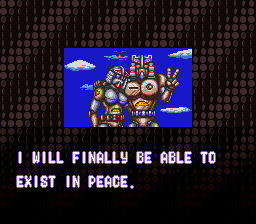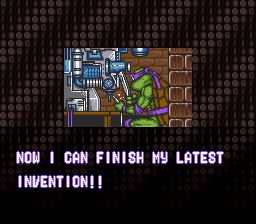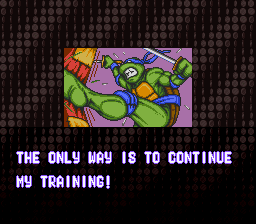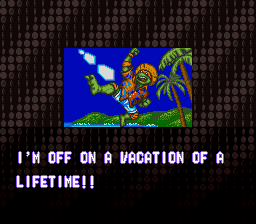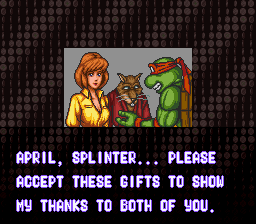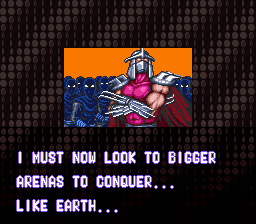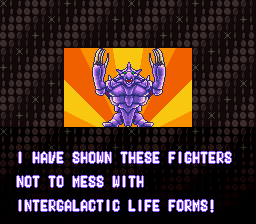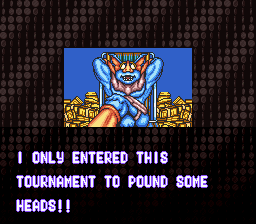- Teenage Mutant Ninja Turtles (NES)
- Teenage Mutant Ninja Turtles: The Arcade Game
- Teenage Mutant Ninja Turtles: World Tour
- Teenage Mutant Ninja Turtles: The Manhattan Missions
- Teenage Mutant Ninja Turtles III: The Manhattan Project
- Teenage Mutant Ninja Turtles: Turtles in Time
- Teenage Mutant Ninja Turtles: Hyperstone Heist
- Teenage Mutant Ninja Turtles: Fall of The Foot Clan
- Teenage Mutant Ninja Turtles II: Back From The Sewers
- Teenage Mutant Ninja Turtles III: Radical Rescue
- Teenage Mutant Ninja Turtles: Tournament Fighters (Genesis)
- Teenage Mutant Ninja Turtles: Tournament Fighters (SNES)
- Teenage Mutant Ninja Turtles: Tournament Fighters (NES)
- Teenage Mutant Ninja Turtles (Console – 2003)
- Teenage Mutant Ninja Turtles (GBA – 2003)
- Teenage Mutant Ninja Turtles 2: Battle Nexus (Consoles)
- Teenage Mutant Ninja Turtles 2: Battle Nexus (GBA)
- Teenage Mutant Ninja Turtles: Mutant Melee
- Teenage Mutant Ninja Turtles 3: Mutant Nightmare (Console)
- TMNT (2007) – Console
- TMNT (2007) – NDS and PSP
- Teenage Mutant Ninja Turtles 3: Mutant Nightmare (DS)
- TMNT (GBA)
- Teenage Mutant Ninja Turtles: Smash-Up
- Teenage Mutant Ninja Turtles: Arcade Attack
- Teenage Mutant Ninja Turtle (Plug and Play)
- Teenage Mutant Ninja Turtles Fast Forward: Ninja Training NYC / TMNT: Power of 4
- TMNT: Ninja Adventures – Mini-Game and Activity Centre
- Teenage Mutant Ninja Turtles: The Ninja Tribunal / The Shredder Reborn
- Teenage Mutant Ninja Turtles: Double Damage
Released in late November, two months after the Sega Genesis game, the SNES version of Tournament Fighters is a completely different game and headed by many of the development mainstays of the TMNT series. The directorial reigns were given to Takemasa Miyoshi for this game. Miyoshi had been an employee at Konami for some time by the time of this game’s release as a scenario writer and designer, having contributed to Konami’s ever expanding arcade technology and also been part of Hyperstone Heist’s designer team. For this game, Miyoshi was not only the Director, but also the character designer, planner and lead programmer. Under his watch, several characters would be re-imagined quite radically.
The story of SNES’s Tournament Fighters depends on the mode selected between either Arcade Mode or Story Mode. The Arcade Mode is a quest for each fighter to enter a tournament to win a hefty cash prize, which they all want to use for different purposes, some evil, some selfish, some giving. The Story Mode is in some ways a liberal retelling of the very first TMNT game on NES, with Splinter and April having been kidnapped by the Foot, challenging them to come rescue their friends before it is too late, and the brothers setting out in their blimp throughout the city for clues. While the kidnapping of April and Splinter has been the general premise for many games, there are several hints throughout that the idea of making use of elements from the first game’s story and setting was done consciously. Apart from these modes, there is also a two player option and a Watch mode for CPU fights. The roster is now more of an all star line-up from all corners of TMNT, with the four shellshocked brothers naturally in the forefront, but also several characters from the Adventures comic book series, such as Wingnut, Armaggon, and WAR, while Chrome Dome from the cartoon makes his jump over to a TMNT video game. Shredder appears as a playable character for the very first time ever, and his design is similar to that found in Hyperstone Heist, though no longer donning his cape. His Cyber Shredder name is retained from Radical Rescue. Rat King and Karai acts as the game’s bosses. There is also one original character in the game, Aska. Unlike the Genesis games, the bosses can be selected with a cheat code found in the game.
While the Genesis version was a three (well, two really) button figher, the SNES game is now a four button fighter with Y and B acting as light strikes while X and A are fierce strong strikes. Each character has fewer special moves compared to the Genesis game, though the emphasis is on speed and combos rather than special moves in the SNES version. Taking several pages out of Street Fighter II Turbo and Fatal Fury 2‘s book, Tournament Fighters on the SNES is filled with lightning speed combos and counters and great care is taken to balance the characters even more so than in the Genesis game, and on par with the console releases of Street Fighter II. Even the Ninja Turtles themselves now feel completely different from one another, not just in speed or strength, but in the way their moves and controls are set up which is based around the fluidity of their weapons. The supporting cast also show great care taken to their movesets and designs, creating a roster worthy of a good fighting game. Again showing some innovation, the game features a Mutant Meter, which is basically a SNK style special meter which can be used to unleash devastating finishing moves when filled up by pressing both X and A together. After the release of Tournament Fighters, the idea of special bars and knockout specials became common place in fighting games. Even though the game in a normal setting is quite fast, the options menu allows to ramp up the speed significantly, making for some of the most intense matches on a console fighter. With the Konami code, the game allows even for more speed, becoming virtually unplayable on the fastest setting for regular players.
As mentioned, many of the characters have been redesigned for this game specifically. The Turtles themselves look much more sinister and detailed, closer to Dooney’s interpretations of the brothers, while retaining the separate colored headbands. Rat King is probably the most drastically redesigned character in the whole game, being transformed from a twisted lean psychopath to a brawling muscular wrestler, utilizing grapple moves and showing a much more visually intimidating representation. Though radical, through great design the changes made to the characters works in favor of the game, being recognizable for fans, and useful for the game’s layout. The new portraits and illustrations shown throughout the manual and game cutscenes provides a whole new unique artistic take on the franchise, though sadly despite its quality it would not see more use further down the road.
When speaking characters in Tournament Fighters, most of the attention is given to the original character Aska, a beautiful and deadly female ninja exclusive to this game. Since the very first public reveal of the game in 1993 in game publications, her origins have been speculated on, and many theories have come to light from this. The most obvious theory most often reported was that it was originally set to be April instead of Aska, but for whatever reason it was changed. Others speculated that Konami was not convinced the TMNT name was strong enough among the Japanese gaming community, so they designed an original character with more Japanese styled origins. While it’s hard to say if April was ever planned to be part of the lineup at some point or another during the planning stages, the TMNT name was quite strong in Japan, especially in the video game market due to the quality of the arcade games and the NES games being highly popular. However the truth on Aska’s origins can be found inside the game code itself on a beta release.
On the beta release, with the assist of some modified code, Aska is selectable in an unfinished form under a very different name; Mitsu.
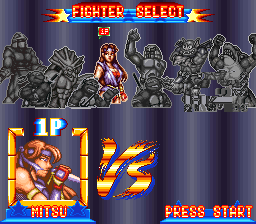
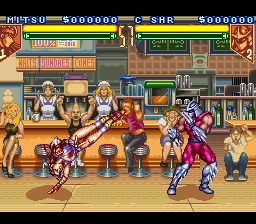
At some point, Aska was slated to be the female character and love interest of Michelangelo in the third live action movie which was released earlier in 1993. However, the movie underperformed and was critically and publicly reviled, leading to the character to be scrapped due to it being completely forgettable. Her appearance remains largely the same between the name changes, meaning Mitsu would probably have been a very similar character just given a design change much like Rat King. Aska also features many changes made on her sprite and appearance between the US release and the Japanese release, adding to the interest in the character. Another interesting character is the clone that appears throughout the story mode. Though at first it might seem like a carry over idea from the Genesis game, there is a bit more to the clone in this game, being that the battle against him is actually a throwback to the first TMNT game, where a similar battle took place.
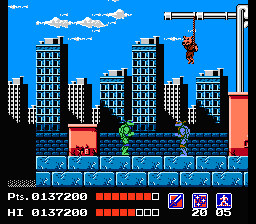
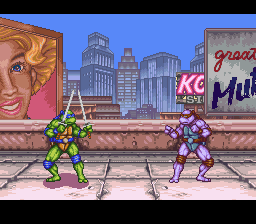
Graphically and musically, the game is top rank, among the very best on SNES. Unlike the Genesis game, the SNES stages flows with life and color, with the scenic background of the rooftop overlooking New York City to Channel 6 television studio, each stage has tons of character and charm. Each character has great size and a wealth of animation frames, giving everyone a distinct look and feel against one another. The cutscenes are also filled with a great amount of detail, and have a more Japanese animation look to it ever before, with April O’Neil benefiting greatly from this in her supporting role. Kazuhiko Uehara acted as the composer on the game, and is among the strongest of all the TMNT games released when it comes to music quality with high tempo game rock and fusion pop music.
By the time Tournament Fighters on SNES saw release, the ship had already sailed for the franchise to regain its momentum, and TMNT suffered greatly in the holiday season of 1993, still suffering from the poor reception of the movie. As a console fighter, Tournament Fighters is arguably one of the very best available on a 16-bit console and in some aspects better than the Street Fighter II ports. In comparison to the arcade editions of Street Fighter II, there’s not much of an argument of Capcom coming out on top constantly redefining the genre, but in terms of the ports they made available, while great in their own right, suffered from loss in animation, sprite size and speed. Tournament Fighters is tailor made for the SNES and managed to bring all the excitement and depth of an arcade fighter to a home console and even add some unique features of its own along the way, without any gimped graphics or sound. It was just simply too late to the party, and as such overlooked despite its excellent quality. There was some early criticism over the roster being filled with largely unknown characters, though over time as fans began to surround themselves more with the TMNT universes, opinions shifted to a more positive tone.
Of all the TMNT games, the SNES Tournament Fighters holds the most differences between regional releases. Released in Japan as Mutant Warriors, the Japanese version holds several improvements. As noted, Aska is now slightly modified to appear slightly more luscious with skimpier attire and bouncing breasts in her all new winning animation, bringing her overall appearance and behavior closer to that of SNK’s Mai Shiranui. Some moves across each character is slightly modified in hit percentage and reach to further balance the game. All new voice clips, some taken from Turtles in Time, were implemented for more clear recognition of the moves, and Studio 6 now featured breakable walls to allow for stage extension as seen in the Genesis game.
Allan’s cover art has Donatello fighting Armaggon, while the Japanese release uses Miyoshi’s illustrations as cover art.
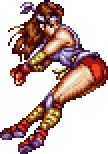
Hip Launch (Tournament Fighters)
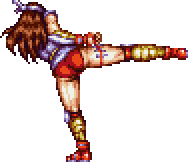
Strong Kick (Tournament Fighters)

Victory Animation (Tournament Fighters)
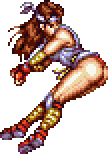
Hip Launch (Mutant Warriors)
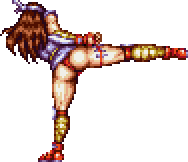
Strong Kick (Mutant Warriors)
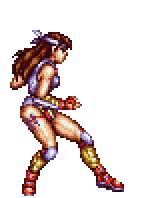
Victory Animation (Mutant Warriors)
